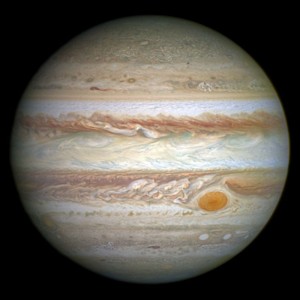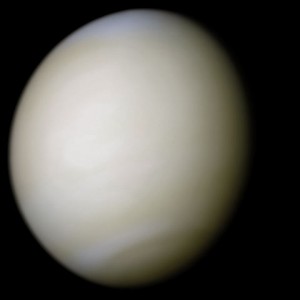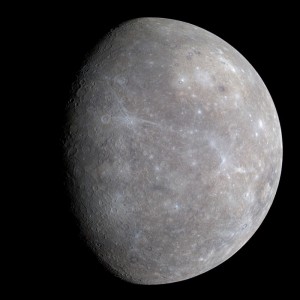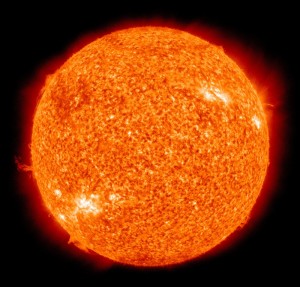About 342,012,346 miles past Mars lies the largest planet in our solar system, Jupiter. Jupiter is much different than the past four planets that we’ve talked about because you cannot actually stand on it’s surface. It is called a “gas giant” meaning it’s made of entirely gas. It is composted of about 75% hydrogen and about 25% helium. Viewed from Earth, it can be one of the brightest objects in the sky due to the high amount of sunlight that reflects off the clouds on the surface.
Jupiter, being the fourth planet from the sun also has the fourth largest/longest orbital period. It takes almost 12 Earth years for one year on Jupiter to pass. It’s mass is about 317 times the mass of Earth’s. Much like our planet, Jupiter has a magnetic field that protects it from the Sun’s harmful radiation. Some believe that it might have a solid iron core in it’s center to cause that, but it is not yet proven. The magnetic field allows for beautiful auroras to appear on it’s south and north poles much like Earth. Another similarity to our planet is that there are hurricanes! The “Great Red Spot” on Jupiter’s surface is believed to be a hurricane that has existed since 1831. Images have shown that it has been decreasing in size in the past few years but it is still a giant storm(Much larger than hurricane Matthew).
In addition to various Earth originating satellites that are currently orbiting Jupiter, there are 61 natural moons around the planet. One of these moons, named Europa, is currently the prime candidate for body that could have life in our solar system. Of course, it’s too cold for life to be on it’s surface, but under the surface, there is something interesting. Europa has a multiple mile thick sheet of ice on it’s surface, but we have evidence that there is a liquid ocean under it’s surface that could be warm enough to support life.
Jupiter is a planet that literally helps define our solar system. Without it, asteroids would be randomly scattered throughout, orbits would not be the same, and Earth might have not even formed. It’s amazing how one planet can have such a big influence.






